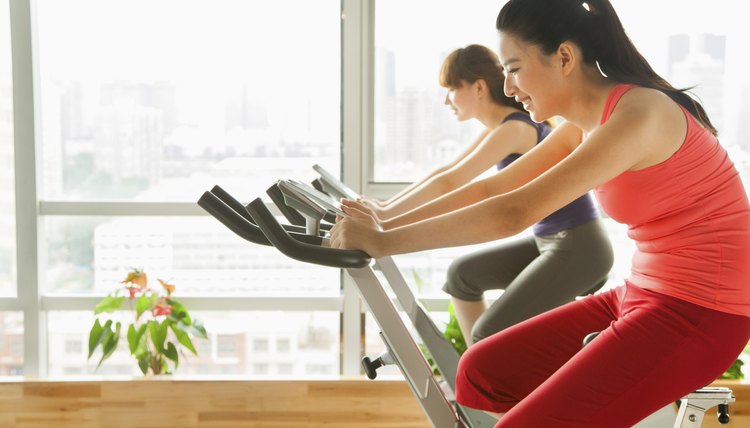What does fact checked mean?
At SportsRec, we strive to deliver objective content that is accurate and up-to-date. Our team periodically reviews articles in order to ensure content quality. The sources cited below consist of evidence from peer-reviewed journals, prominent medical organizations, academic associations, and government data.
- American College of Sports Medicine: Selecting and Effectively Using a Stationary Bicycle
- American College of Sports Medicine: Selecting and Effectively Using a Stationary Bicycle
The information contained on this site is for informational purposes only, and should not be used as a substitute for the advice of a professional health care provider. Please check with the appropriate physician regarding health questions and concerns. Although we strive to deliver accurate and up-to-date information, no guarantee to that effect is made.
Which Is Better: Electromagnetic or Magnetic Exercise Bikes?

Stationary exercise bicycles have many different types of resistance systems, including tensioned belts, air and magnets. Manufacturers use magnets on the flywheel of the bike to provide consistent tension during the pedal stroke that closely simulates riding an actual bicycle. Bikes with an electromagnetic resistance system are easier to use, and can therefore provide a better workout, than those with manually adjustable magnetic brakes.
Changing Resistance Levels
The biggest benefit electromagnetic brakes is that you can ratchet up the resistance quickly by pressing a button on the electronics console. If you have to manually adjust the magnets with a tension knob, the resistance will only change as fast as you can turn the knob, and the use of a manual system may cause you to break your exercising cadence.
Workout Variety
Bikes with electromagnetic resistance offer a wider variety of exercise programs, which not only helps you train harder but will also keep you interested in exercising. The electronic console of the bike can vary the resistance level at specific time intervals as you ride, to simulate cycling outdoors. A bike with manually adjusted brakes only allows you to exercise at a specific resistance for a set distance, time or calories burned.
Magnetic Function
Though the way you move the brakes in relation to the flywheel is different, manual and electromagnetic brakes actually function the same way. Both types of brakes use eddy currents to control the speed of the flywheel. Walter Boyes explains in his “Instrumentation Reference Book” that as the magnets get close to the conductive material of the flywheel, electrons are spun in elliptical eddy currents in the opposite direction from that in which the wheel is spinning. The closer the magnets are to the flywheel, the more drag is created and the more resistance you feel pedaling.
Cost
A drawback of electromagnetic resistance is that it can significantly add to the cost of the bike. Lower quality bikes with manual resistance brakes typically cost less than $300, while an exercise bike with electromagnetic brakes could cost $600 or more.
References
Writer Bio
Writing professionally since 2005, Ryan Haas specializes in sports, politics and music. His work has appeared in "The Journal-Standard," SKNVibes and trackalerts. Haas holds a Bachelor of Arts in English and creative writing from the University of Illinois.
